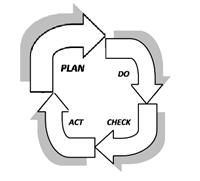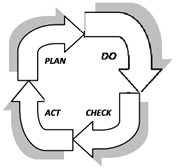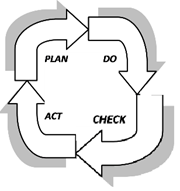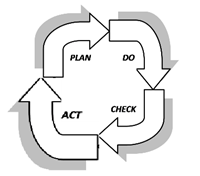Dredging management activities
Plan

Establish the objectives and processes necessary to deliver results in accordance with the organisation's policy
The activities to plan dredging involve:
- identifying the environmental values of the port
- conducting a baseline assessment
- risk evaluation and prioritisation to evaluate options including their likelihood and consequence
- risk management measures identifying controls to apply to improve risk
- avoid, minimise, mitigate or offset are approaches applied to dredging methods and mitigation measures
- documentation of plans for long-term maintenance dredging and for each dredging campaign.
Port sediment activities – put our operations into context
Understanding port sediment characteristics and risks and how they interact and contribute to broader catchment contributions within the Great Barrier Reef World Heritage Area is important for planning dredging activities.
Sediments and dredging at ports
The Queensland Ports Association (QPA) is responsible for the delivery of Water Quality Action 17 (WQA17) within the Reef 2050 Long-Term Sustainability Plan. The objective of WQA17 is to “understand the port sediment characteristics and risks at the major ports and how they interact and contribute to broader catchment contributions within the World Heritage Area.” The QPA worked on a study with Queensland ports and the knowledge gained from this work contributes to the management of port operations in a sustainable way that does not adversely affect the Great Barrier Reef.
You can view the reports associated with this research on the website for each of the port authorities at the following links:
- Gladstone Ports Corporation
- North Queensland Bulk Ports Corporation
- Port of Townsville
- Far North Queensland Ports Corporation
Port dredging and sediment references
- Maintenance Dredging Strategy for Great Barrier Reef World Heritage Area (2016)
- National Assessment Guidelines for Dredging 2009
- Ports Australia Environmental Code of Practice for Dredging and Dredged Material Management (2016)
- Dredging and Dredge Spoil Material Disposal Policy (2016)
- Improved Dredge Material Management for the Great Barrier Reef Region (2013)
- Dredging and Australian Ports: Subtropical and Tropical Ports (2014)
- Dredging and Australian Ports: Temperate Ports (2015)
- Port of Hay Point Sustainable Sediment Research (Current)
- Port of Brisbane Offsite Stormwater and Sediment Management Project (Current)
- Port of Brisbane Dredging
- Dredging at the Port of Townsville
- Dredging at the Port of Gladstone
- Dredging at Ports North
- Risk Assessing Dredging Activities (Current)
- PIANC publications:
- Sustainable Maritime Navigation (2013)
- Dredging and Port Construction around Coral Reefs (2010)
- Dredging Management Practices for the Environment – a structured selection approach (2009)
- Environmental Risk Assessment of Dredging and Disposal Operations (2006)
- Guidelines for sustainable inland waterways and navigation (2003)
Do

Implement the processes
The activities to implement the dredging processes entail:
- Stakeholder Engagement – consultative input required for best practice management of dredging programs and in the interests of a collaborative and transparent process.
- Mobilisation - obtaining all required legal and regulatory requirements, preparatory work, operational requirements etc to undertake a dredging project.
- Operations – undertaking dredging programs utilising leading practices, fit for purpose equipment and site relevant environmental protection measures.
Check

Monitor and measure processes against policy, objectives, targets, legal and other requirements, and report the results
The activities for the measurement and analysis processes include:
- operational Monitoring ensures that the information generated by the risk management process is captured, used and maintained and provides assurance that the risk management processes in place are achieving their objectives
- reporting of data relating to dredging activities will allow better accountability, improve the transparency of process and broaden the understanding of the impacts of dredging activities
- conforming to ensure compliance with all regulatory and legal requirements when undertaking dredging programs.
Monitoring
Information on the environmental monitoring programs at the ports:
Act

Take actions to continually improve performance of the management system
The actions taken for the continual improvement of the management system include:
- Adaptive management - continually improving dredging management practices through adjusting to changing circumstances or new information about the effectiveness of prior measures or management. Adaptive management allows for best practice management to be implemented as technologies develop over time.
- Reporting - is an important part of evaluating performance and guiding adaptive management.
- Stakeholder engagement - is important for a transparent and collaborative adaptive management process.
- Last updated 18 November 2022

